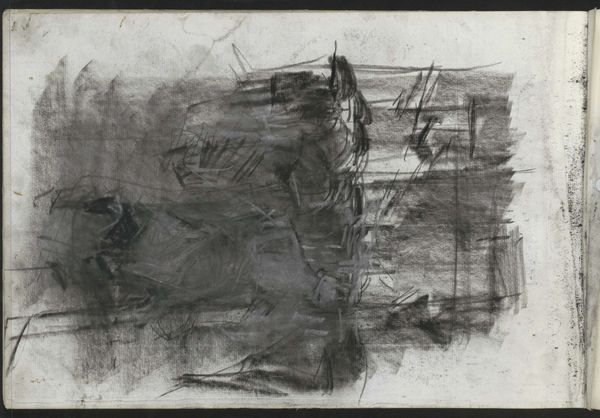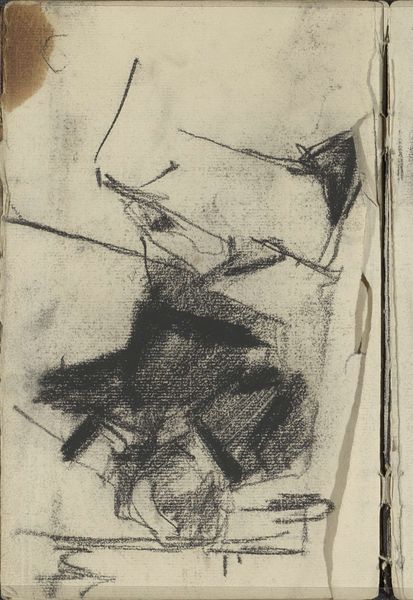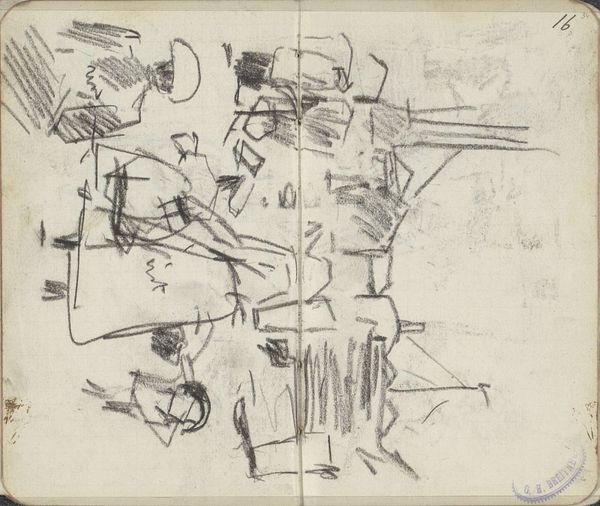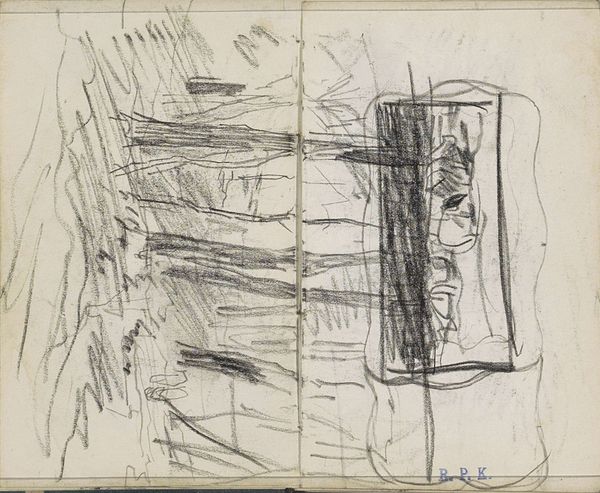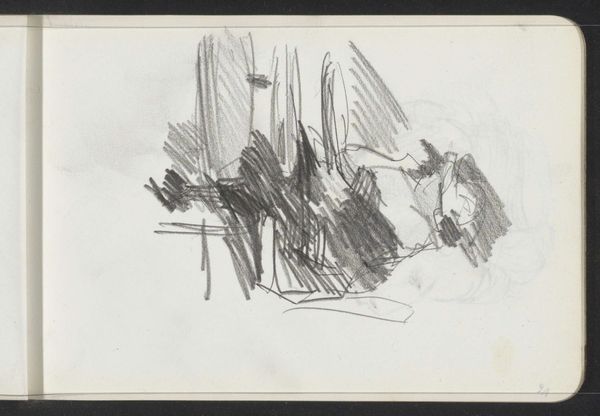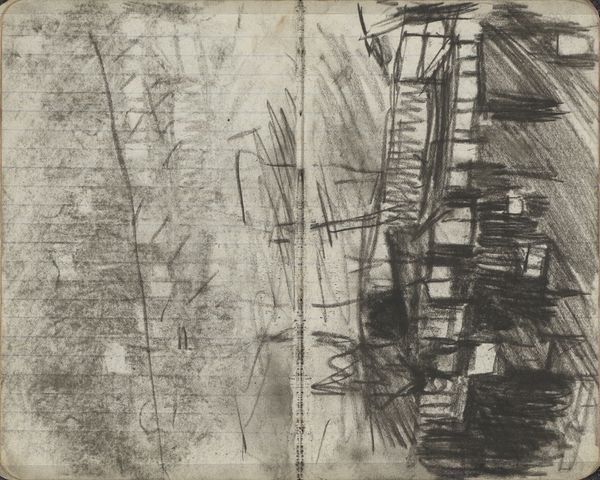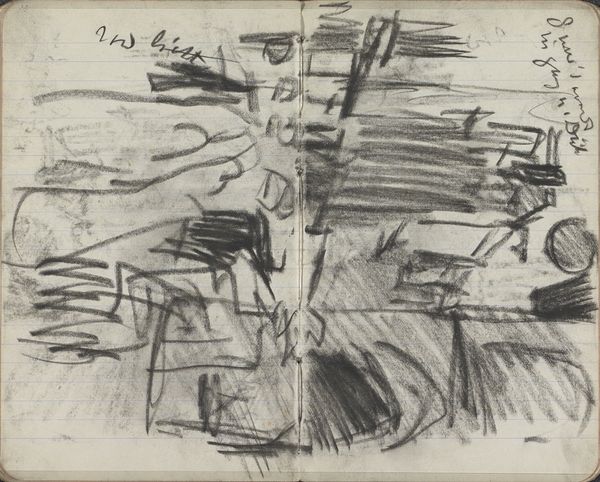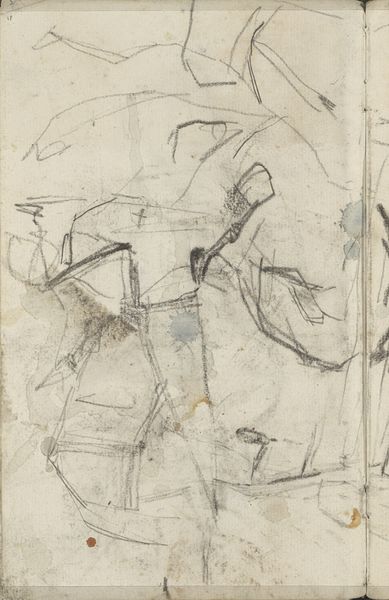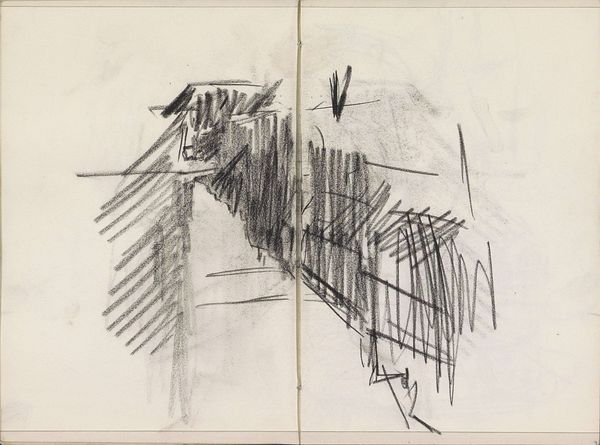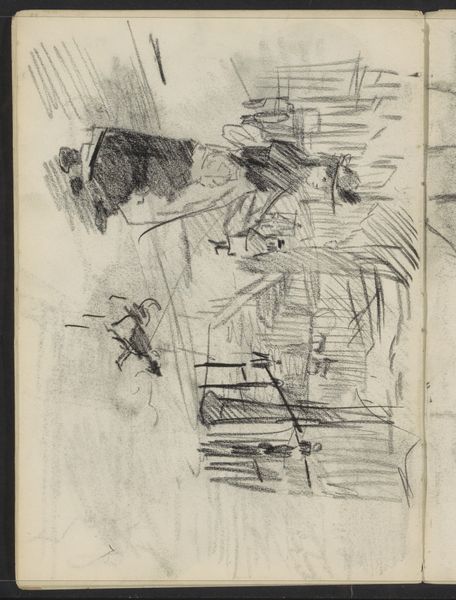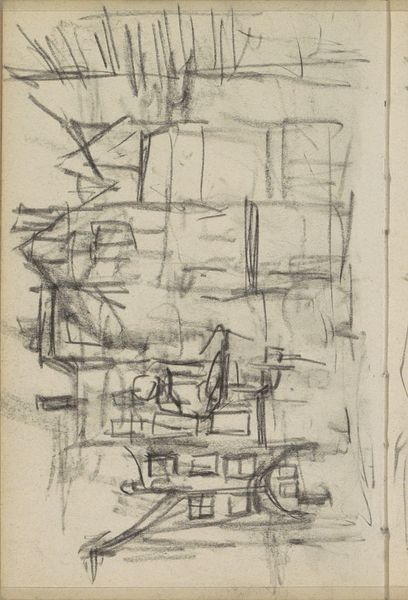
Copyright: Rijks Museum: Open Domain
Editor: So, here we have "Man in een fauteuil," by Isaac Israels, likely created sometime between 1875 and 1934. It's a pencil drawing on toned paper, currently held at the Rijksmuseum. I’m immediately struck by its sketchy, unfinished quality. It feels very immediate and intimate, like a glimpse into the artist's personal sketchbook. What do you see in this piece? Curator: I appreciate your observation regarding the drawing's immediacy. If we examine it through a Formalist lens, it’s imperative to consider the interplay of lines and values. Note how Israels uses a seemingly limited range of tonal variation to evoke depth. Consider the compositional balance: the figure, though somewhat ambiguously rendered, anchors the visual space, juxtaposed against areas of starker, more abstract mark-making. Editor: Abstract mark-making? Do you mean like the scribbled lines behind the figure? Curator: Precisely. These seemingly haphazard strokes are critical to understanding the spatial relationships within the image. Are they simply background, or do they contribute to a sense of unease, of being caught in a transient moment? What effect does the unfinished quality have on our reading of the figure’s posture, the implied narrative? Is it passivity or pensiveness that Israels captures? Editor: That's interesting. I hadn't considered how those background lines could be contributing to the mood. The lack of clear definition does leave the figure open to interpretation. It almost feels like he's still in the process of becoming. Curator: Indeed. And let us not forget the material properties: the toned paper, the choice of pencil as a medium. What do these suggest about Israels’ intent, his method of working? Could we even propose a semiotic analysis of the marks themselves—what do they signify beyond their purely representational function? Editor: I see what you mean. By focusing on these formal elements, the lines, tones, and materials, we can unpack a whole other level of meaning beyond just seeing a man in a chair. Curator: Exactly. And this, in essence, is the core of a Formalist reading: decoding art through a rigorous examination of its intrinsic elements. It encourages close looking and deep thinking.
Comments
No comments
Be the first to comment and join the conversation on the ultimate creative platform.

